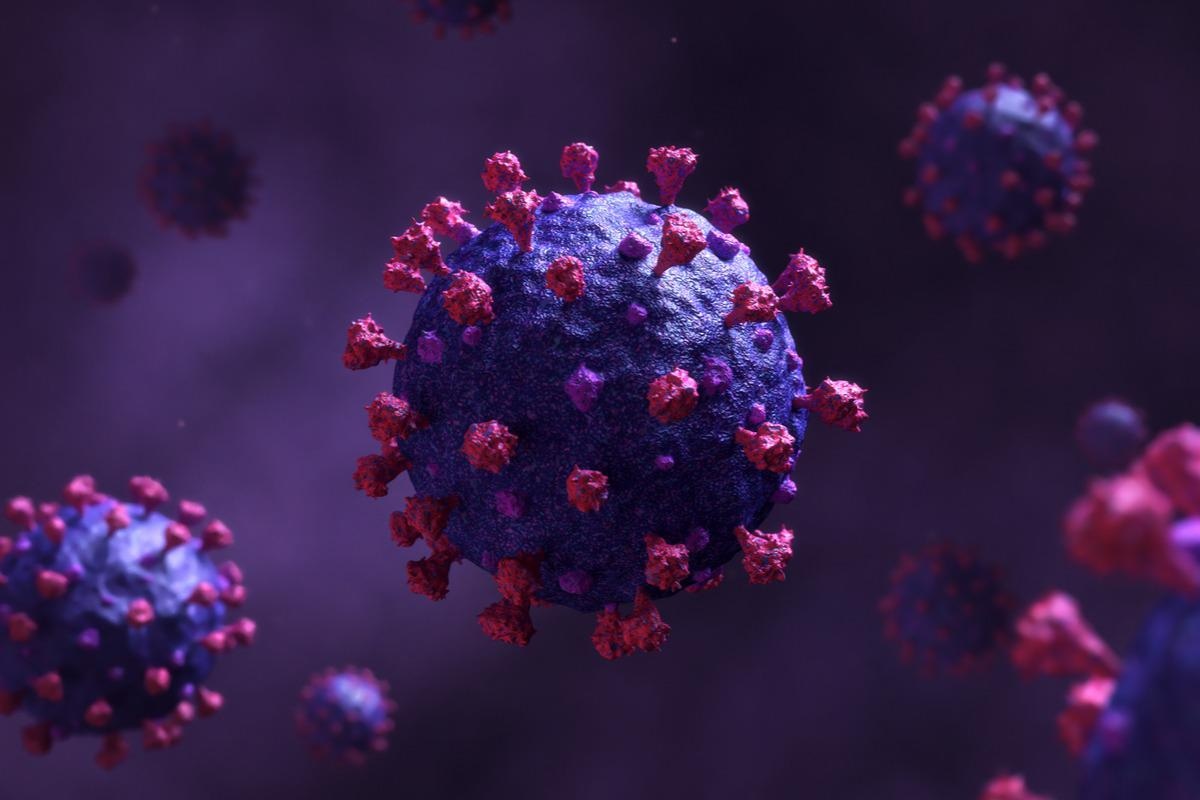Needle- and adjuvant-free vaccination with non-infectious T4-COVID nanoparticles induces strong immunity in mice
In a recent study posted to bioRxiv* preprint server, researchers developed a mucosal vaccine for coronavirus disease 2019 (COVID-19) based on bacteriophage.

Background
Vaccines against severe acute respiratory syndrome coronavirus-2 (SARS-CoV-2) have been developed on different platforms such as nucleic acids, adenovirus vectors, protein subunits, and inactivated virus particles. These vaccines, intramuscularly administered, remain the principal source of vaccines for the non-vaccinated population. Although many other vaccines are in various stages of development, no intranasal (i.n.) vaccine has been approved yet for humans.
While injectable vaccines effectively protect from severe disease, including hospitalization or death, they do not efficiently preclude the acquisition (entry) or shedding (exit) of viral particles from infected persons. The risk of SARS-CoV-2 transmission from vaccinated but susceptible persons is concerning.
Currently available vaccines target SARS-CoV-2’s spike (S) protein based on its ancestral Wuhan-Hu-1 strain, and consequently, they are less efficacious against the emergent SARS-CoV-2 variants, which harbor a substantially mutated S protein. Previously, the study’s authors reported developing a new intramuscular (i.m.) vaccine based on T4 bacteriophage (T4-CoV-2).
About the study
In the present study, researchers tested the T4-CoV-2 vaccine in mice under i.n. administration. They evaluated the immunogenicity in BALB/c mice by i.m. or i.n vaccination of two doses of control (T4 vector alone) or T4-CoV-2 vaccine. The vaccine was coated with 20 µg (high-dose) of S-ectodomain (Secto) trimers, 4.8 µg (medium-dose), or 0.8 µg (low-dose). Sera collected 21 days after the second dose from (i.n. or i.m.) vaccinated mice showed high immunoglobulin G (IgG) levels, whereas control mice lacked antigen-specific antibodies.
Findings
High levels of IgG1 and IgG2a subtypes were evident with i.n. or i.m. inoculation. T-helper cell 1 (Th1) and Th2-derived antibodies were elicited approximately equally with medium- or high-dose vaccination, but 5-to-25-fold lower responses were observed for low dose course or single-dosage. Notably, higher serum IgA levels were detected regardless of the inoculation route, which is intriguing given that IgA stimulation is not commonly observed with conventional vaccines, including those against SARS-CoV-2.
In virus neutralization assays on Vero E6 cells with SARS-CoV-2 WA-1/2020 strain, the research team observed robust neutralizing potency of sera from vaccinated mice. Further, neutralizing titers against SARS-CoV-2 WA-1, Beta, and Delta variants were comparable. A three-fold-higher neutralizing activity was detected with i.n. high-dose administration relative to i.m. vaccination against SARS-CoV-2 and tested variants.
The researchers harvested splenocytes from mice 26 days after the last dose. Both cluster of differentiation 8 (CD8) and CD4 T lymphocytes secreting tumor necrosis factor (TNF)- α, interleukin (IL) -17A, or interferon (IFN)- γ were significantly elevated in vaccinated mice compared to controls when stimulated ex vivo with Secto or S- and nucleoprotein (NP) peptides.
The systemic and mucosal responses were higher with i.n. vaccination which contrasts the general notion that i.n. administration results in robust mucosal responses and lower systemic responses or vice versa. In the bronchoalveolar lavage fluid samples (BALF), 25-fold higher IgG levels were detected in intranasally vaccinated mice than intramuscularly injected mice. Furthermore, control mice challenged with a mouse-adapted strain of SARS-CoV-2 (MA10) showed rapid weight loss, while vaccinated mice exhibited modest or no weight loss. Moreover, vaccination by either route protected mice against the SARS-CoV-2 challenge.
Next, the vaccine was engineered to display Secto from Beta variant (secto-β) on T4 phage (henceforth, T4-CoV-2-β) and inoculated in AC70 mice with two high-doses. The mice contained a human angiotensin-converting enzyme-2 (hACE2) knock-in. Overall, T4-CoV-2-β-vaccinated transgenic mice had stronger systemic and mucosal humoral immunity, consistent with findings in BALB/c mice.
Neutralizing titers against WA-1 strain and Delta variant were comparable, and although the serum showed Omicron-neutralizing titers, they were nearly six-fold lower than that against WA-1 strain. Th1-biased cellular immunity was observed with i.n. administration of T4-CoV-2-β vaccine. When mice were challenged with WA-1 or Delta variant, they noted rapid weight loss of control mice as opposed to minimal-to-no-weight loss. SARS-CoV-2 load in lungs was high in control mice, whereas no vaccinated mice had a detectable virus.
The T4-CoV-2-β vaccine was stored at 4 °C and 22 °C and tested at different time points for stability and functionality. Functionality was assessed by the binding ability of Secto-β to hACE2 and stability by the loss of intact S protein conjugated with phage or degradation of protein into fragments. The researchers noted that the vaccine was stable and functional for 10 weeks, irrespective of storage temperature.
Conclusions
The authors of the present study reported the successful establishment of a bacteriophage-based vaccine displaying SARS-CoV-2 Secto, which could complement existing vaccines. Systemic and mucosal immune responses were pronounced with i.n. vaccine administration. The authors believed that viral entry and exit might be blocked by the T4-CoV-2 vaccine, given its ability to induce cellular, protective, and sterilizing immunity. Besides, more studies in other animals and phase 1 clinical trials in humans are required before the vaccine can be used by the general public.
*Important notice
bioRxiv publishes preliminary scientific reports that are not peer-reviewed and, therefore, should not be regarded as conclusive, guide clinical practice/health-related behavior, or treated as established information.
- Zhu, J. et al. (2022) "A bacteriophage-based, highly efficacious, needle and adjuvant-free, mucosal COVID-19 vaccine". bioRxiv. doi: 10.1101/2022.04.28.489809. https://www.biorxiv.org/content/10.1101/2022.04.28.489809v1
Posted in: Medical Science News | Medical Research News | Disease/Infection News
Tags: Adenovirus, Angiotensin, Antibodies, Antigen, Bacteriophage, CD4, Cell, Coronavirus, Coronavirus Disease COVID-19, covid-19, Enzyme, Ex Vivo, immunity, Immunoglobulin, Interferon, Interleukin, Lungs, Nanoparticles, Necrosis, Omicron, Peptides, Protein, Research, Respiratory, SARS, SARS-CoV-2, Severe Acute Respiratory, Severe Acute Respiratory Syndrome, Syndrome, Transgenic, Tumor, Tumor Necrosis Factor, Vaccine, Virus, Weight Loss

Written by
Tarun Sai Lomte
Tarun is a writer based in Hyderabad, India. He has a Master’s degree in Biotechnology from the University of Hyderabad and is enthusiastic about scientific research. He enjoys reading research papers and literature reviews and is passionate about writing.
Source: Read Full Article
